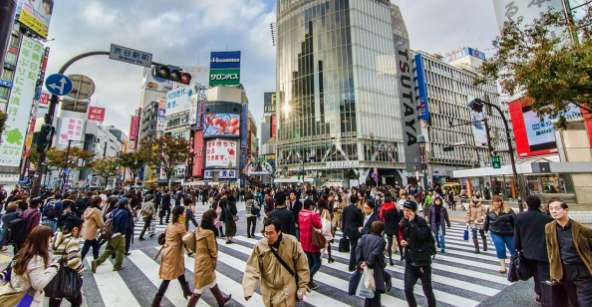Japanese Business Card Culture – How to Exchange Business Cards
Date: 2025.04.28
In Japan, exchanging business cards is not just about sharing contact information, it is a formal ritual that demonstrates respect and professionalism. Even a small mistake can leave a bad impression on your business partners!
Join Help All to discover the proper way to use business cards and make a great impression in the Japanese business environment!
1. The Importance of Business Cards
A business card is not just a piece of contact information; it is a tool for building a professional image and expanding business relationships. In Japan, business cards play an essential role in meetings and collaborations.
1.1 Making an Impression
A well-designed business card helps you make a strong first impression, showcasing credibility and professionalism. Elements such as color, logo, and typography contribute to shaping your brand image and making it easier for partners to remember you.
1.2 Connecting & Expanding Relationships
Business cards facilitate quick information exchange, especially useful in events, seminars, or meetings with partners. This simple yet effective method helps expand networks and create long-term collaboration opportunities.
1.3 Demonstrating Professionalism
In Japan, the way you exchange business cards reflects your level of respect and professionalism. Even in the digital age, business cards remain an essential aspect of face-to-face communication, enhancing trust and credibility in the eyes of business partners.
2. General Notes on Exchanging Business Cards
In Japanese culture, business cards should be given and received with both hands, accompanied by a slight bow to show respect. Avoid handing over a card with one hand, sliding it across the table, or using a wrinkled or dirty card. Always keep your business cards in a holder to maintain a neat and professional appearance.
– When giving a business card: Present it with the text facing the recipient.
– Brief self-introduction: If meeting multiple people, start with the highest-ranking person.
– Quickly review the card and confirm the person’s title if necessary.
– Do not put the card in your pocket or wallet immediately – place it neatly on the table or store it carefully in a business card holder.
Following these etiquette rules will help you demonstrate professionalism and make a positive impression on Japanese business partners.
3. When Giving Business Cards
Properly presenting a business card is a crucial step that demonstrates respect and professionalism.
🔹 How to hold a business card:
– Use both hands, with your thumbs holding the bottom edge to avoid covering any information.
– Ensure the text faces the recipient for easy readability.
🔹 How to present a business card:
– Stand up before giving the card, even if you were seated.
– Bow slightly and give a brief self-introduction while handing over your card.
– If the recipient holds a higher position, position your card slightly lower than theirs as a sign of respect.
– Introduce yourself formally in Japanese, stating your company name, title, and name.
「初めまして、『会社名』の『役職』、『名前』と申します。よろしくお願いいたします。」
(Hajimemashite, [Company Name] no [Job Title], [Your Name] to mōshimasu. Yoroshiku onegaiitashimasu.)
This means: “Nice to meet you. I’m [Your Name], [Your Position] at [Company Name]. It’s a pleasure to meet you.”
4. When Receiving Business Cards
Handling a business card properly after receiving it is just as important as giving it.
🔹 How to receive a business card:
– Accept it with both hands, holding the bottom edges to avoid covering any details.
– When receiving the card, politely say 「ちょうだいいたします」 (Chōdai itashimasu – “I humbly accept it”).
– Read through the information to show respect.
– Confirm the person’s title if necessary. (Japanese culture places great importance on hierarchy and rank in communication, and these are reflected in how people are addressed. Therefore, when communicating or collaborating with Japanese professionals, always pay close attention to the highest title printed on their business card to use appropriate honorifics.)
Example: Japanese commonly address others by their job titles, such as:
社長 (しゃちょう) – President/CEO or 部長 (ぶちょう) – Department Manager rather than using general terms like “Sir” or “Madam.”
🔹 Handling a business card during a meeting:
– Place the business card on the table according to the position of the person opposite you.
– If you receive multiple cards, arrange them according to rank.
– Do not write on the business card in front of the person who gave it to you.
🔹 Storing a business card:
– Use a business card holder to keep it neat and professional. Do not put it in your pocket or wallet, as this may be seen as disrespectful.
– After the meeting, you can write notes on the back to help you remember key details for future contact.

5. When Should You Exchange Business Cards ?
Business cards are not only used in professional environments but also serve as a valuable tool for networking and building a strong personal brand.
🔹At the beginning of a meeting or when meeting a partner:
Exchange business cards at the start to demonstrate professionalism and respect, which is especially important in Japanese business culture.
🔹 When attending events or seminars:
A great opportunity to connect with many people. Proactively giving out business cards helps expand your network and create new collaboration opportunities.
🔹 When introducing yourself to someone new:
A business card saves time, provides complete information, and leaves a lasting impression.
🔹 When being introduced by someone else:
Handing out your business card helps new contacts remember your name, position, and company, while also showcasing your professionalism.
🔹 At the end of a meeting (If You haven’t exchanged cards yet):
If you haven’t had the chance to exchange cards at the beginning, do so when saying goodbye to maintain a polite and lasting connection.
Conclusion
Exchanging business cards is not just about sharing contact information, it is a crucial part of Japanese business etiquette. Doing it correctly helps you make a strong impression, demonstrate professionalism, and build long-term relationships with partners.
Understanding and following business card exchange rules will boost your confidence when working with Japanese professionals. If you’re preparing for a business meeting, don’t forget to practice to leave a great first impression!






